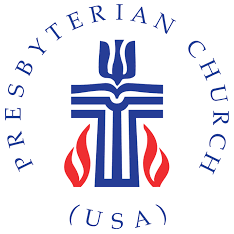What We Believe
We believe that God exists in the trinity of the Father, the Son, and the Holy Spirit. We believe that Christ is the Son of God, that Jesus' birth was miraculous through Mary as the mother of Jesus, chosen by God to bear His son. We believe that the resurrection of the body refers to the reuniting of the spiritual body and the physical body. We believe that God grants the gift of grace which enables us to gain the faith necessary for salvation, and salvation is available to us through our acceptance of Jesus Christ who was dead, buried, and raised from the dead in the forgiveness of our sin. We believe that the sacraments of baptism and communion unite us with Jesus Christ and make us members of God's family, the church. We believe in active participation for all members in ministry and worship. We are a welcoming congregation!
The Six Great Ends of the Church
From the Book of Order, The Constitution of the Presbyterian Church (U.S.A.) Part II (F-1.0304)
The great ends of the church are:
The proclamation of the gospel for the salvation of humankind
The shelter, nurture, and spiritual fellowship of the children of God
The maintenance of divine worship
The preservation of the truth
The promotion of social righteousness
The exhibition of the Kingdom of Heaven to the world
This statement of the great ends of the Church, slightly edited in the Book of Order, came from the United Presbyterian Church of North America, which united with the Presbyterian Church in the United States of America in 1958. The statement was then made a part of the Constitution of the United Presbyterian Church in the United States of America, as the body was called. This now classic statement was adopted by the United Presbyterian Church of North America in 1910, following various actions between 1904 and 1910 looking forward to the revision of the church’s Constitution. The banners, below, are displayed in the sanctuary and were handcrafted by members of the congregation.
The First Great End
“The proclamation of the gospel for the salvation of humankind”
The book represents the Scriptures. The dove is rising from the Scriptures indicating the source of both the original witness and our present understanding. The same Spirit that inspired the original writers enables us to receive the gospel. The cross behind the book and dove reminds us that the heart of the gospel of Jesus Christ, God with us and for us.
The Second Great End
“The shelter, nurture, and spiritual fellowship of the children of God”
Multi-hued hands represent all the children of God. The dove’s wings are tipped downward, sheltering the people of God. The triangle of light links the dove to the people.
The Sixth Great End
“The exhibition of the Kingdom of Heaven to the world”
The dove is in flight over the globe, carrying an olive branch, echoing Gen. 8:11: “And lo, in her mouth a freshly plucked olive leaf; so Noah knew that the waters had subsided from the earth.” This represents the eighth day of creation, God’s grace coming into the world, the reign of God proclaimed by Jesus Christ. The light rising behind the earth represents the dawning of God’s kingdom.
The Third Great End
“The maintenance of divine worship”
The chalice, a reminder of the Trinity, represents the Lord’s Supper, and the three drops of water, Baptism in the name of the Father, the Son, and the Holy Spirit. The dove reminds us that the same Spirit is present in the Sacraments as in the proclamation of the gospel. The Sacraments enact the gospel. The raised arms signify our response of praise and thanksgiving; our worship of the living God.
The Fourth Great End
“The preservation of the truth”
The banner represents the light of truth shining in the darkness. The dove reminds us that the truth we proclaim to the world is the gospel of Jesus Christ, God with us and for us. “The light shines in the darkness, and the darkness has not overcome it” (John 1:5)
The Fifth Great End
“The promotion of social righteousness”
The banner represents Amos 5:24 “But let justice roll down like waters, and righteousness like an ever flowing stream”






